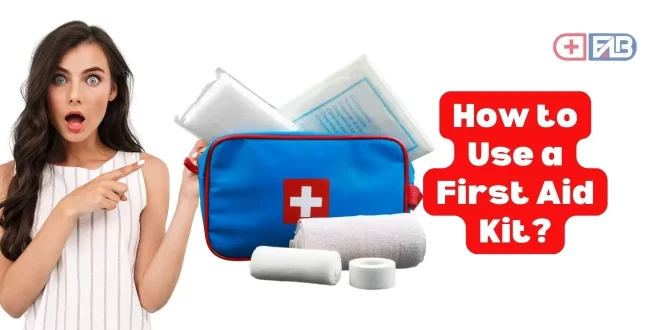
First aid kits play an important role in emergency response situations, whether it’s at home, in the workplace, or in public spaces. They contain essential supplies that can help save lives and prevent injuries from becoming worse. The impact of first aid kits on emergency response is significant, and this article will explore how they can make a difference in different scenarios.
Home Emergencies
A first aid pack can make the finest difference in the world when an accident occurs. Emergencies can occur at any time. In a home emergency, a first aid kit can help address injuries such as cuts, burns, and falls. With the right supplies, you can clean and dress wounds, control bleeding, and stabilize fractures until medical help arrives. Having a first aid kit on hand can also provide peace of mind to you and your family. Knowing that you have the necessary tools to respond to an emergency.
Workplace Emergencies
Workplaces are not immune to accidents, and having a first aid kit is a legal requirement in most jurisdictions. In an industrial setting first aid kits should be equipped with specialized supplies. That can help address hazards such as chemical burns or eye injuries. In an office setting, first aid kits can help address minor injuries such as paper cuts or strains. In any case, having a first aid kit on hand can help minimize the severity of an injury and reduce the risk of complications.
Public Emergencies
Public spaces such as parks, malls, and public transportation are prone to emergencies. In these situations, a first aid kit can help provide immediate assistance to those in need. With the right supplies, you can address injuries such as bleeding, fractures, and cardiac arrest. In addition to having a first aid kit, it’s also important to have trained personnel who can respond to emergencies and provide CPR if necessary.
First aid kits are designed to be a first line of defense in emergency situations, providing individuals with the necessary tools to address injuries until professional medical help arrives. The contents of a first aid kit may vary depending on the intended use and environment, but they typically include items such as bandages, antiseptic wipes, gauze pads, adhesive tape, scissors, tweezers, and gloves. More advanced first aid kits may also include items such as tourniquets, CPR masks, and trauma shears.
The importance of first aid kits cannot be overstated, as they can make. A significant impact on the outcome of an emergency situation. For example, in cases of severe bleeding, quick access to a first aid kit can allow individuals to apply a tourniquet or pressure bandage, potentially saving the life of the injured person. Similarly, in cases of cardiac arrest, a first aid kit equipped with a CPR mask and AED (automated external defibrillator) can greatly increase the chances of survival.
In addition to providing essential supplies, first aid kits can also serve as a visual reminder of the importance of emergency preparedness. Seeing a first aid kit in a public space, workplace, or home can prompt. Individuals to take steps towards being prepared for emergencies. Such as taking a first aid course or creating an emergency plan with their family or coworkers.
It’s important to note that while first aid kits can be a valuable resource. They should not be seen as a substitute for professional medical care. In serious or life-threatening emergencies, individuals should always. Call for professional medical help and not rely solely on the contents of a first aid kit.
Conclusion
The impact of first aid kits on emergency response cannot be overstated. They provide essential supplies that can help save lives and prevent injuries from becoming worse. In addition to having a first aid kit, it’s important to have trained personnel. Who can respond to emergencies and provide first aid until medical help arrives. Whether it’s at home, in the workplace, or in public spaces. Having a first aid kit on hand can make a difference in emergency situations.
First aid kits play a critical role in emergency response, providing individuals. With essential supplies to address injuries and potentially save lives. They serve as a reminder of the importance of emergency preparedness and can prompt. Individuals to take action towards being better prepared for emergencies.